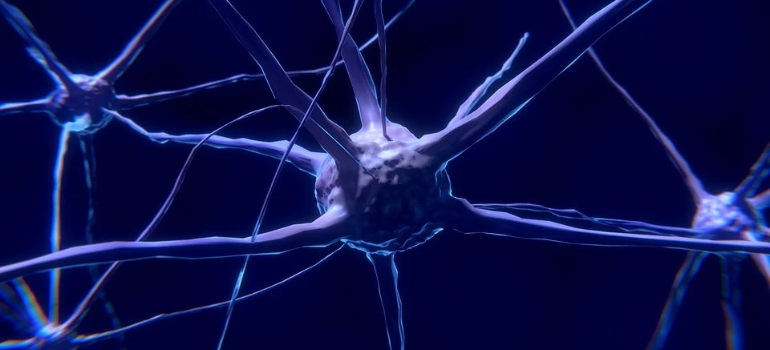Addiction is not merely a series of poor choices or a lack of willpower; it’s a complex neurological condition that alters the brain’s structure and function. The concept of neuroplasticity is central to understanding both the development of addiction and the path to recovery, the brain’s remarkable ability to reorganize itself by forming new neural connections throughout life. Delve into the scientific underpinnings of neuroplasticity, exploring how substance use disorders (SUDs) hijack this adaptive mechanism and how, conversely, neuroplasticity can be harnessed to promote healing and sustained recovery.

Understanding Neuroplasticity
Neuroplasticity, also known as brain plasticity, refers to the brain’s ability to change and adapt as a result of experience. This includes the strengthening or weakening of synapses, the formation of new neural pathways, and even the generation of new neurons in certain brain regions.
Traditionally, it was believed that the brain’s structure was relatively immutable after a certain age. However, contemporary neuroscience has demonstrated that neuroplasticity persists throughout life, enabling learning, memory formation, and recovery from brain injuries.
Neuroplasticity and the Development of Addiction
The Hijacking of the Reward System
At the core of addiction lies the brain’s mesolimbic dopamine system, often referred to as the reward pathway. This system includes key structures such as the ventral tegmental area (VTA) and the nucleus accumbens (NAc). Under normal circumstances, this pathway reinforces behaviors essential for survival, like eating and social interaction, by releasing dopamine, a neurotransmitter associated with pleasure and reward.
Substances of abuse, however, can cause a surge of dopamine release far exceeding natural stimuli. This excessive dopamine release reinforces drug-taking behavior, leading to the strengthening of neural pathways associated with substance use—a clear example of maladaptive neuroplasticity.
Structural Changes in the Brain
Chronic substance use leads to significant structural and functional changes in the brain:
-
Dendritic Spine Density: Studies have shown that drugs like cocaine increase the density of dendritic spines (small protrusions on neurons that facilitate synaptic connections) in the NAc, enhancing synaptic connectivity and reinforcing drug-seeking behavior.
-
Prefrontal Cortex Impairment: The prefrontal cortex (PFC), responsible for decision-making, impulse control, and executive function, often exhibits reduced activity and structural integrity in individuals with SUDs. This impairment diminishes self-regulation and increases susceptibility to relapse.
-
Amygdala and Hippocampus Alterations: These regions, involved in emotion regulation and memory, respectively, also undergo changes, contributing to heightened stress responses and the formation of strong associations between environmental cues and substance use.
Neuroplasticity in Recovery: Rewiring the Brain
The same neuroplastic mechanisms that contribute to the development of addiction can be leveraged to facilitate recovery. The brain’s capacity to form new, healthy neural connections allows individuals to replace maladaptive behaviors with constructive ones.
Therapeutic Interventions Promoting Neuroplasticity
-
Cognitive Behavioral Therapy (CBT): CBT helps individuals recognize and modify negative thought patterns and behaviors. By consistently practicing new coping strategies, patients can strengthen alternative neural pathways, reducing reliance on substance-related behaviors.
-
Mindfulness-Based Relapse Prevention (MBRP): MBRP combines mindfulness practices with traditional relapse prevention techniques. Regular mindfulness meditation has been shown to increase gray matter density in brain regions associated with self-awareness and emotional regulation, such as the PFC and anterior cingulate cortex.
-
Physical Exercise: Regular aerobic exercise promotes neurogenesis (the creation of new neurons) and enhances synaptic plasticity. Exercise also increases levels of brain-derived neurotrophic factor (BDNF), a protein that supports neuron survival and growth.
-
Pharmacological Aids: Certain medications can support neuroplastic changes. For instance, medications that modulate glutamate transmission may help restore synaptic balance disrupted by chronic substance use.
Lifestyle Factors Enhancing Neuroplasticity
-
Nutrition: Diets rich in omega-3 fatty acids, antioxidants, and other nutrients support brain health and plasticity.
-
Sleep: Adequate sleep is crucial for memory consolidation and the maintenance of synaptic plasticity.
-
Social Connections: Positive social interactions can stimulate the release of neurochemicals that promote neural growth and resilience.
Challenges in Harnessing Neuroplasticity for Recovery
While the brain’s plasticity offers hope for recovery, several challenges exist:
-
Persistence of Drug-Related Memories: Powerful associations between drug use and environmental cues can persist, leading to cravings and potential relapse.
-
Individual Variability: Genetic factors, the duration and intensity of substance use, and co-occurring mental health conditions can influence the extent and pace of neuroplastic changes during recovery.
-
Time Frame: Rewiring the brain is a gradual process. While some neural adaptations can occur relatively quickly, others may take months or even years, necessitating sustained commitment to recovery efforts.
Future Directions in Research and Treatment
Advancements in neuroscience continue to shed light on the mechanisms of neuroplasticity in addiction and recovery:
-
Transcranial Magnetic Stimulation (TMS): This non-invasive technique uses magnetic fields to stimulate specific brain regions. TMS has shown promise in modulating neural circuits implicated in addiction.
-
Neurofeedback: By providing real-time feedback on brain activity, individuals can learn to regulate neural patterns associated with cravings and stress.
-
Psychedelic-Assisted Therapy: Emerging research suggests that substances like psilocybin may promote neuroplasticity and facilitate profound psychological insights, potentially aiding in the treatment of SUDs.
Neuroplasticity plays a dual role in addiction: it contributes to the development of maladaptive behaviors associated with substance use, but it also offers a pathway to recovery. By understanding and harnessing the brain’s capacity for change, individuals can replace harmful patterns with healthier ones, leading to sustained sobriety and improved quality of life.
Recovery is not solely about abstaining from substances; it’s about reshaping the brain’s architecture to support a fulfilling, substance-free existence. Through a combination of therapeutic interventions, lifestyle modifications, and emerging neuroscientific techniques, the promise of neuroplasticity in addiction recovery continues to grow.



